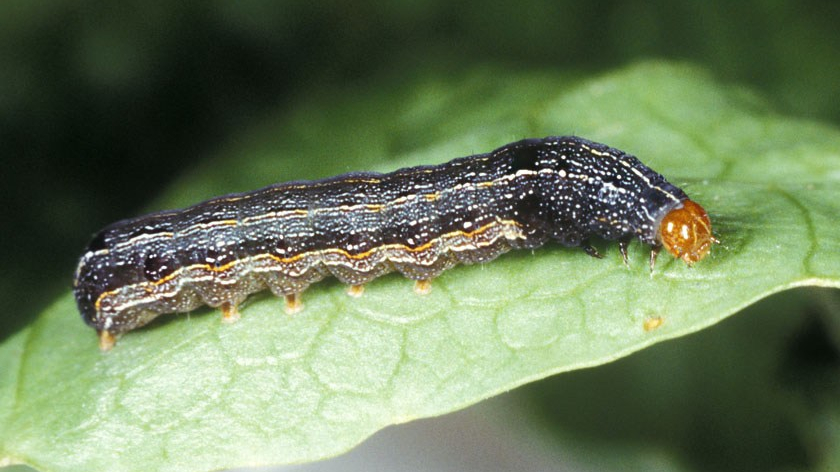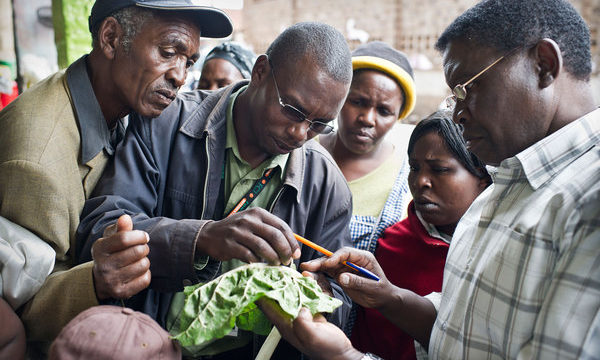
A woman picking cotton in a field near Nagarjuna Sagar — Andhra Pradesh, India (by By Claude Renault, via Wikimedia Commons)
On 5th October, the BBC reported that at least 50 farmers have died in the western state of Mharashtra, India, since July, due to suspected accidental pesticide poisoning (see the full article on the BBC website).
Nineteen of these deaths were reported from Yavatmal district, a major cotton growing area, where farmers use a variety of cotton which is meant to be resistant to bollworms. However, this year, despite use of this variety, crop damage caused by bollworm has been highly significant, leading to an increase in the use of pesticides.
Without the use of personal protective equipment (PPE), such as gloves, overalls, goggles, boots and a mask, pesticides can be extremely harmful, causing symptoms such as vomiting, dizziness, respiratory problems, visual impairment and disorientation.
How can we help?
The Plantwise Knowledge Bank hosts variety of relevant resources that you may find useful, such as a factsheet on reducing exposure the agrochemicals, written by the Ministry of Agriculture in Barbados, which includes the following management information:
- Spray at cool times of the day (evening or morning) so that wearing protective equipment is bearable in the heat.
- The concentrated chemical is especially hazardous and additional equipment may be required when handling these chemicals.
- Wear a specially produced spray suit or at least a long-sleeved shirt and full length pants.
- Wear long rubber gloves and rubber boots
- Your pants should go on the outside of the boots
- Your sleeves should be on the inside of the gloves
- Wear a hat to keep the chemical out of your hair
- Wear a mask, preferably with a filter; if not available, use a bandanna (A bandanna may not give good protection and could make you think you are protected when you are not)
- Wear protective glasses/sunglasses
- Maintain the spraying equipment and check for leaks, replace the filter in the mask often. Make sure the mask is suitable for agrochemicals use.
We believe is it important to take an Integrated Pest Management approach to controlling pests, which improves effectiveness and is environmentally sensitive. For advice on how to prevent, monitor and control bollworm on cotton using non-chemical control, please see our cotton bollworm green list which mentions practices such as reducing planting density, using trap crops and using natural enemies.
There is also a pest management decision guide specific to India, which emphasises non-chemical cotton bollworm management practices, and details pesticides that can be used along with their restriction information.
When developing and delivering content for farmers, we take the use of PPE very seriously, which is why we ensure that it is included in plant doctor training and highlighted in our content on the Plantwise Knowledge Bank.
If you would like to raise awareness of the importance of wearing protective clothing when spraying agrochemicals, then please print our Stay Safe poster.
1 Comment
Leave a Reply
Related News & Blogs
“Use of any pesticide comes with some risk, but this risk can be reduced”
Pesticides are a widely used pest management option. However, if applied incorrectly, they can pose serious risks to human health, ecosystems, and food safety. From farm workers and consumers to pollinators and waterways, the impacts of unsafe pesticid…
30 June 2025





[…] Suspected pesticide poisoning in India highlights importance of PPE […]